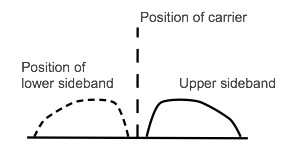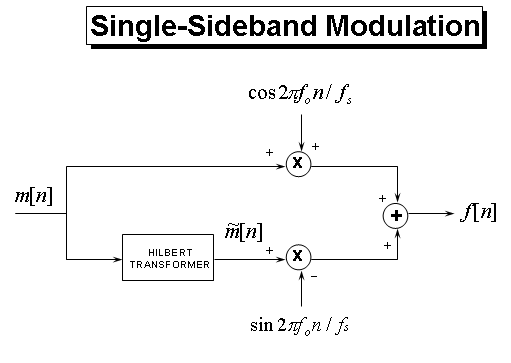


Single Sideband(SSB) modulation is a type of amplitude modulation (AM) that is used to transmit radio signals. In SSB modulation, the carrier and one of the sidebands are suppressed or removed, leaving only the
remaining sideband. This reduces the bandwidth required for transmission and allows more channels to be accommodated in a given frequency band. There are two types of SSB modulation: upper sideband (USB) and lower sideband (LSB). In USB, the carrier and the
lower sideband are removed, leaving only the upper sideband. In LSB, the carrier and the upper sideband are removed, leaving only the lower sideband.
SSB modulation is commonly used in radio communication systems, particularly in long-distance communications. It is also used in some television broadcasting systems and in amateur radio.
Single Sideband(SSB) demodulation is the process of extracting the original message signal from a single sideband modulated signal. Demodulation is the inverse process of modulation,
which means that the modulated signal is transformed back to the original message signal. In single sideband modulation, one of the sidebands (either upper or lower) and the
carrier are suppressed, so the demodulation process is more complex than in conventional AM modulation.

The principle of SSB modulation is to suppress one of the sidebands and the carrier signal to reduce the bandwidth requirements for transmission while retaining the necessary information contained in the signal.
This is achieved by filtering out either the upper or lower sideband and the carrier, leaving only the other sideband.
In radio communications, single-sideband
suppressed-carrier modulation (SSB-SC) is a type of modulation used to transmit information, such as an audio signal, by radio waves. A refinement of amplitude modulation, it uses transmitter power
and bandwidth more efficiently. Amplitude modulation produces an output signal the bandwidth of which is twice the maximum frequency of the original baseband signal.
Single-sideband modulation avoids this bandwidth increase, and the power wasted on a carrier, at the cost of increased device complexity and more difficult tuning at the receiver.
The expression for SSB modulation is given by:
s(t) = Ac[m(t) cos(2πfct) - h(t) sin(2πfct)]
Ac is the carrier amplitude, m(t) is the message signal, fct is the carrier frequency, h(t) is a Hilbert transform of the message signal m(t).
The expression for SSB demodulation is given by:
Multiply the received SSB signal with a local oscillator (LO) signal that has the same frequency and phase as the carrier wave of the modulated signal:
s1(t) = s(t) * cos(2πfct)
Pass the product of the multiplication through a low-pass filter to extract the baseband message signal:
m(t) = LPF[s1(t)]
where s(t) is the received SSB signal, fct is the carrier frequency, cos(2πfct) is the local oscillator (LO) signal, s1(t) is the product of the multiplication of the received signal with the LO signal,
LPF is a low-pass filter that removes the high-frequency components and leaves the baseband message signal m(t).